Goji berry – Gou qi zi,Lycium barbarum
[Family and medicinal part] This product is the mature fruit of Ningxia Lycium barbarum, a plant of the Solanaceae family.
[Nature and flavor and meridians] Sweet, flat. Enters the liver and kidney meridians.
[Effects] Tonify the kidney and benefit the essence, nourish the liver and improve eyesight.
[Clinical application] Used for liver and kidney deficiency, spermatorrhea, back and knee pain, as well as dizziness and vertigo.
Goji berry – Gou qi zi, Lycium barbarum has the function of nourishing the liver and kidney, and can be used regardless of kidney yin deficiency or kidney yang deficiency. For the treatment of kidney deficiency and spermatorrhea, it is often used in combination with Morinda officinalis, Cistanche deserticola, and Tong Tribulus terrestris; for dizziness and blurred vision, it can be used in combination with chrysanthemum, Rehmannia glutinosa, and Cornus officinalis.
[Prescription name] Ganqizi, Goji berry – Gou qi zi, Lycium barbarum (wash and dry).
[ਆਮ ਖੁਰਾਕ ਅਤੇ ਵਰਤੋਂ] ਇੱਕ ਤੋਂ ਤਿੰਨ ਕਿਆਨ, ਡੀਕੋਕਟ ਅਤੇ ਲਿਆ ਗਿਆ।
【Comments】1. Goji berry – Gou qi zi,Lycium barbarum is sweet and mild in nature, soft and moist, and is a medicine for nourishing the liver and kidneys. Its function is similar to that of Tong Tribulus Terrestris and Cuscuta Seed. However, according to clinical practice, although Tong Tribulus Terrestris, Cuscuta Seed, and Goji berry – Gou qi zi,Lycium barbarum are all products for balancing yin and yang, Tong Tribulus Terrestris and Cuscuta Seed are better at supporting yang than nourishing yin, so they are classified as yang-supporting medicines; Goji berry – Gou qi zi,Lycium barbarum is better at nourishing yin than supporting yang, and its tonic effect is better. This product can be used with cooked rehmannia to nourish the liver and kidneys; with chrysanthemum, it can nourish the liver and improve eyesight; with Polygonatum sibiricum, it can replenish essence and benefit qi. It can be used for all diseases of liver and kidney deficiency.
2. According to ancient literature, this product can be used to treat thirst. The current folk prescription uses only Goji berry – Gou qi zi,Lycium barbarum, steamed and chewed, one qian each time, two to three times a day, to treat mild diabetes, and has a certain effect.
3. Although this product is a commonly used drug in clinical practice, it should not be used if there is exogenous heat, spleen deficiency and dampness, and loose stools.
[Example of prescription] Qiju Dihuang Wan “Medical Grade”: Goji berry – Gou qi zi,Lycium barbarum, chrysanthemum, cooked earth, cornus officinalis, yam, Poria cocos, peony bark, and oriental rhizome. Treat liver and kidney deficiency, dizziness, and blurred vision for a long time.
[Literature excerpt] “Food Therapy Materia Medica”: “Strengthen tendons and bones… remove wind and fatigue, and replenish essence and qi.”
“Tangye Materia Medica”: “It is mainly used for heart disease, dry throat… thirst and drinking, and kidney disease.”
“Compendium of Materia Medica”: “It can nourish the kidney and moisten the lungs, produce essence and benefit qi. This is a flat tonic medicine. The so-called essence deficiency is supplemented with flavor.”
“Illustrated Materia Medica”: “It can nourish the kidney and benefit essence…, and thirst, blurred vision, back pain and knee pain are all cured.”
This product is the dried mature fruit of Goji berry – Gou qi zi,Lycium barbarum L., a plant of the Solanaceae family. The fruit is harvested in the second season of autumn when it turns red, dried with hot air, and the stalk is removed, or dried until the skin wrinkles, then sun-dried and the stalk is removed.
[ਵਿਸ਼ੇਸ਼ਤਾਵਾਂ]
This product is spindle-shaped or oval, 6-20 mm long and 3-10 mm in diameter. The surface is red or dark red, with a small protruding style mark on the top and a white stalk mark at the base. The peel is flexible and wrinkled, and the flesh is fleshy and soft. There are 20-50 seeds, which are kidney-shaped, flat and warped, 1.5-1.9 mm long, 1-1.7 mm wide, and light yellow or brownish yellow on the surface. The smell is slight and the taste is sweet.
[ਪਛਾਣ]
(1) This product is yellow-orange or reddish brown in color. The epidermal cells of the exocarp are polygonal or long polygonal in surface view, with straight or finely wavy vertical walls, and parallel keratinous stripes on the surface of the outer flat wall. The thin-walled cells of the mesocarp are polygonal, with thin walls, and the cell cavity contains orange-red or reddish brown spherical particles. The surface of the stone cells of the seed coat is irregularly polygonal, with thick walls, wavy curves, and clear layers.
(2) Take 0.5g of this product, add 35ml of water, heat and boil for 15 minutes, cool, filter, and extract the filtrate with 15ml of ethyl acetate by shaking. Take the ethyl acetate solution and concentrate it to 1ml as the test solution. Take another 0.5g of wolfberry control medicinal material and prepare the control medicinal material solution in the same way. According to the thin layer chromatography method (General Rule 0502), take 5 of the above two solutions and spot them on the same silica gel G thin layer plate, use ethyl acetate-chloroform-formic acid (3:2:1) as the developing agent, develop, take out, dry, and examine under ultraviolet light (365nm). In the chromatogram of the test product, at the corresponding position of the chromatogram of the control medicinal material, a fluorescent spot of the same color appears.
[ਜਾਂਚ]
The water content shall not exceed 13.0% (General Rule 0832 Method 2, temperature is 80℃℃).
Total ash content shall not exceed 5.0% (General Rule 2302).
Heavy metals and harmful elements shall be determined according to the lead, cadmium, arsenic, mercury and copper determination method (General Rule 2321 atomic absorption spectrophotometry or inductively coupled plasma mass spectrometry). Lead shall not exceed 5 mg/kg; cadmium shall not exceed 1 mg/kg; arsenic shall not exceed 2 mg/kg; mercury shall not exceed 0.2 mg/kg; copper shall not exceed 20 mg/kg.
[ਐਬਸਟਰੈਕਟ]
According to the hot leaching method under the water-soluble extract determination method (General Rule 2201), it shall not be less than 55.0%.
[ਸਮੱਗਰੀ ਨਿਰਧਾਰਨ]
Preparation of Goji berry – Gou qi zi,Lycium barbarum polysaccharide reference solution Take 25 mg of anhydrous glucose reference substance, accurately weigh it, place it in a 250 ml volumetric flask, add appropriate amount of water to dissolve, dilute to the scale, shake well, and obtain (each 1 ml contains 0.1 mg of anhydrous glucose).
Preparation of standard curve Accurately measure 0.2m., 0.4ml, 0.6m, 0.8m, and 1.0m of the reference solution and place them in county-level test tubes, respectively, add water to make up to 2.0ml, accurately add 1ml of 5% phenol solution to each, shake well, quickly and accurately add 5ml of sulfuric acid, shake well, let stand for 10 minutes, keep warm in a 40℃ water bath for 15 minutes, take out, quickly cool to room temperature, use the corresponding reagent as blank, and measure the absorbance at a wavelength of 490nm according to the UV-Vis spectrophotometry (General Rule 0401), use absorbance as the ordinate and concentration as the abscissa, and draw a standard curve
Determination method Take about 0.5g of the crude powder of this product, accurately weigh it, add 100ml of ether, heat and reflux for 1 hour, let it stand, cool it, carefully discard the ether solution, and place the residue in a water bath to evaporate the ether. Add 100ml of 80% ethanol, heat and reflux for 1 hour, filter while hot, wash the filter residue and filter with 30ml of hot 80% ethanol in batches, put the filter residue and filter paper in a flask, add 150ml of water, and heat and reflux for 2 hours. Filter while hot, wash the source with a small amount of hot water, combine the source liquid and the washing source, cool, and place in a 250ml volume plate, dilute with water to the scale, sample name, accurately measure 1ml, and place in the test tube and add x10ml, and the method under the preparation of the standard curve is as follows. From “accurately add 1ml of 5% phenol solution”, determine the absorbance according to the law, read the weight (mg) of glucose in the test solution from the standard curve, and calculate.
This product is calculated as a dry product, and the content of wolfberry polysaccharide is calculated as glucose (C6H1206), which shall not be less than 1.8%.
Betaine is determined according to high performance liquid chromatography (General Rule 0512).
Chromatographic conditions and system suitability test: amino-bonded tridacna oleifera was used as filler; acetonitrile-water (85:15) was used as mobile phase; detection wavelength was 195nm, and the number of theoretical plates calculated based on the betaine peak should be no less than 3000.
Preparation of reference solution: take an appropriate amount of betaine reference, accurately weigh it, and add water to make a solution containing 0.17mg per 1ml. Preparation of test solution: grind this product, take about 1g, accurately weigh it, put it in a stoppered conical flask, accurately add 50ml of methanol, seal it, weigh it, heat and reflux for 1 hour, cool it, weigh it again, make up the lost weight with methanol, shake it well, and filter it. Accurately measure 2 ml of the filtrate, place it on an alkaline alumina solid phase extraction column (2g), elute with 30 ml of ethanol, collect the eluate, evaporate to dryness, dissolve the residue in water, transfer to a 2 ml volumetric flask, add water to the mark, shake well, filter, and take the filtrate to obtain the solution.
Determination method Accurately aspirate 10 ml of the reference solution and the test solution respectively, inject them into a liquid chromatograph, and determine the solution to obtain the solution.
This product, calculated as a dry product, contains no less than 0.50% betaine (C5H1NO,).
[ਕੁਦਰਤ ਅਤੇ ਸੁਆਦ ਅਤੇ ਮੈਰੀਡੀਅਨ]
Sweet, flat. Enter the liver and kidney meridians.
[ਫੰਕਸ਼ਨ ਅਤੇ ਸੰਕੇਤ]
Nourishes the liver and kidneys, improves the essence and improves the eyesight. Used for deficiency of essence, soreness of waist and knees, dizziness and tinnitus, impotence and spermatorrhea, internal heat and thirst, blood deficiency and sallowness, blurred vision.
[ਵਰਤੋਂ ਅਤੇ ਖੁਰਾਕ]
6~129.
[ਸਟੋਰੇਜ]
Place in a cool and dry place, prevent stuffiness, moisture, and moth.
Where is the main production area of wolfberry?
Grows on hillsides and fields in sunny and dry places.
Mainly produced in Ningxia, Gansu, Qinghai, Inner Mongolia and Xinjiang.
Where are the main medicinal parts of wolfberry?
Medicinal parts of wolfberry:
This product is the dried mature fruit of Goji berry – Gou qi zi,Lycium barbarum乚., a plant of the Solanaceae family. Harvested in summer and autumn when the fruit is red, dried with hot air to remove the fruit stalks, or dried until the skin is wrinkled, and then removed from the fruit stalks.
Characteristics of the medicinal parts of wolfberry:
This product is spindle-shaped or oval, 6~20mm long and 3~10mm in diameter. The surface is red or dark red, with a small protruding style mark at the top and a white fruit stalk mark at the base. The peel is flexible and wrinkled; the flesh is fleshy and soft. There are 20~50 seeds, which are kidney-shaped, flat and warped, 1.5~1.9mm long, 1~1.7mm wide, and light yellow or brownish yellow on the surface. Slight smell, sweet taste.
How do historical books record wolfberry?
“Compendium of Materia Medica”: “Replenish essence and strengthen the vagina.
“Compendium of Materia Medica”: “It can replenish essence and qi, change color, whiten, improve eyesight, and calm the mind.
“Food Therapy Materia Medica”: “It can strengthen tendons and resist aging, remove wind, replenish tendons and bones, benefit people, and remove fatigue.
“Compendium of Materia Medica Volume 36”: “Nourishes the kidney, moistens the lungs, and improves eyesight.
“Compendium of Materia Medica”: “Wolfberry, moist and nourishing, can also reduce fever, and specializes in nourishing the kidney, moistening the lungs, generating fluid, and replenishing qi. It is an essential medicine for replenishing liver and kidney true yin deficiency, fatigue and internal heat. Seven or eight out of ten elderly people have yin deficiency, so it is a top-grade product for nourishing essence and improving eyesight.
“Compendium of Materia Medica”: “It is said that wolfberry is good for treating eyes, but it is not for treating eyes. It can strengthen essence and benefit spirit, and make spirit full and essence sufficient, so it is effective for treating eyes.
“Compendium of Materia Medica”: “Wolfberry is mild but not hot, and has the ability to replenish water and control fire.
ਪ੍ਰਭਾਵ
Wolfberry has the effect of nourishing the liver and kidney, improving the essence and eyesight.
What are the main effects and clinical applications of wolfberry?
Wolfberry is used for deficiency and deficiency of essence, soreness of waist and knees, dizziness and tinnitus, impotence and spermatorrhea, internal heat and thirst, blood deficiency and sallowness, and blurred vision.
· Treat deficiency and weakness of liver and kidney due to deficiency of essence and blood, such as weakness of waist and knees, dizziness and tinnitus, impotence and spermatorrhea, internal heat and thirst, blood deficiency and sallowness, and blurred vision. It can be used alone to boil the paste.
· Treat liver and kidney yin deficiency, soreness of waist and knees due to deficiency of essence and blood, dizziness and tinnitus, impotence and spermatorrhea, internal heat and thirst, blood deficiency and sallowness, and blurred vision. It can be taken alone.
· Treat liver and kidney yin deficiency, blurred vision, or dry eyes, etc., and it is often used together with chrysanthemum, rehmannia, and cornus officinalis.
· Treat kidney deficiency and low back pain, residual urine, spermatorrhea and premature ejaculation, impotence and infertility, etc., It can be used together with Cuscuta, Raspberry, Schisandra, etc.
What other effects does wolfberry have?
In my country’s traditional food culture, some Chinese medicinal materials are often widely consumed as food ingredients by the people, that is, substances that are both food and Chinese medicinal materials according to tradition (i.e. edible medicinal substances). According to the documents issued by the National Health Commission and the State Administration for Market Regulation, wolfberry can be used as both medicine and food within a limited range of use and dosage.
Commonly used medicinal diet recipes for wolfberry are as follows:
Kidney deficiency, dizziness, headache, neurasthenia, backache and weak feet
15g wolfberry, 50g Chinese yam, 1 pig brain, ginger, onion, MSG, salt, etc. Rinse the pig brain, wash the Chinese yam and wolfberry and put them in a casserole together, add onion, ginger, and water. Put the casserole on high heat and boil it, then transfer it to low heat and cook it, season it and eat it.
Weakness and fatigue , anemia, blurred vision, impotence due to kidney deficiency, back pain
100g wolfberry, 100g green bamboo shoots, 500g lean pork. Heat oil in a wok, add shredded pork and shredded pork at the same time, stir well with cooking wine, sugar, soy sauce, salt, and MSG, add to the wok with wolfberry, stir-fry for a few times, pour in sesame oil and stir-fry evenly, and serve. Serve with meals.
Blood deficiency and insomnia
10g wolfberry, 15g longan meat, 4 red dates, 100g polished rice, cook porridge for consumption.
What are the compound preparations containing wolfberry?
· Erjing Pills: Helps qi and consolidates essence, protects Dantian, activates blood circulation and keeps the face. It is commonly used in the clinic for the elderly with yin deficiency, dizziness, tinnitus, dry mouth and irritability.
· Zuogui Pills: nourishes the kidney and replenishes yin. It is used for true yin deficiency, sore waist and weak knees, night sweats, fatigue and dry mouth.
· Yougui Pills: warms and replenishes kidney yang, replenishes essence and stops nocturnal emission. Used for kidney yang deficiency, life gate fire deficiency, waist and knee soreness, lack of energy, fear of cold, impotence and spermatorrhea,
loose stool, frequent and clear urination.
· Guilu Erxian Paste: warms the kidney and replenishes essence, replenishes qi and nourishes blood. Used for waist and knee soreness, spermatorrhea, and impotence caused by kidney deficiency and essence deficiency.
· Qiju Dihuang Pills: nourishes the kidney and liver. Used for liver and kidney yin deficiency, dizziness, tinnitus, photophobia, tears in the wind, blurred vision· Wuzi Yanzong Pills: replenishes Kidney and essence. Used for impotence and infertility caused by kidney deficiency and essence deficiency, premature ejaculation, low back pain, and residual urine. Qibao Meiran Granules: Nourishes the liver and kidney. Used for liver and kidney deficiency, premature graying of hair and beard, premature ejaculation, dizziness and tinnitus, back pain,
Modern research progress on wolfberry
This product has multiple pharmacological effects such as enhancing immunity, delaying aging, resisting liver damage, lowering blood sugar, lowering blood lipids, sex hormone-like, and anti-fatigue.
ਵਰਤੋਂ ਵਿਧੀ
Wolfberry is easy to take and can be used as medicine, chewed, soaked in wine, etc. But no matter which method is used, it needs to be taken according to the doctor’s instructions.
How to use wolfberry correctly?
When wolfberry decoction is taken orally, the usual dosage is 5~15g, and the specific dosage is subject to the doctor’s advice.
Chewing wolfberry, 10~20g per day, can treat dry mouth caused by reduced oral saliva secretion, and can treat dry mouth at night.
Wolfberry is generally used in decoctions, decoctions are taken, and can also be made into powder or pills for consumption. However, the use of Chinese herbal medicines must be based on syndrome differentiation and treatment, and should be used under the guidance of professional Chinese medicine practitioners. It should not be used at will, and it is even more forbidden to listen to Chinese medicine prescriptions and advertisements at will. In addition, wolfberries can also be used for daily health care. Common ways of consumption are as follows:
· Make tea: Soak wolfberries in water to drink, which can relieve vision loss and nourish the liver and kidneys. In addition, wolfberries can also be used with chrysanthemum, cassia seed, schisandra, etc.-sparkling water.
Make wine: Use 150~200g of wolfberries and 500ml of white wine. Soak wolfberries for 15 days and then take them, 10~15ml each time, once a day. It can also be used with Chinese herbal medicines such as epimedium and dodder to make wine, which can be used for people with kidney deficiency, impotence, cold pain in waist and legs, etc.
Stir-fry (stir-fried pork liver with wolfberries): prepare 12g of wolfberries, slice 100g of pork liver, and cut 200g of celery into sections. First, add salt, soy sauce, cooking wine, dry starch, and an egg to the liver, mix well, marinate for a while, heat the pan with oil, add chopped green onion, stir-fry until fragrant, then add the liver and stir-fry until it changes color, add wolfberry and celery and stir-fry until cooked. It can nourish the liver and improve eyesight, and is suitable for people with dry eyes, blurred vision, night blindness, etc. caused by insufficient liver yin. Soup: When stewing soup, wolfberry can be added, which has the effect of nourishing the liver and kidney, improving eyesight.
Note: People with spleen deficiency and loose stools are prohibited from taking it.
How to prepare wolfberry?
· Wolfberry: Take the original medicinal materials, remove impurities and residual stems. Crush when using.
· Stir-fried wolfberry: Take the clean wolfberry, put it in the pot, stir-fry it with slow fire until there are scorched spots, take it out and cool it.
What drugs should be used with wolfberry at the same time with special attention?
The combined use of Chinese medicine and the combined use of Chinese and Western medicine requires syndrome differentiation and treatment, and clinical individualized treatment.
If you are taking other medications, please consult a doctor before taking the medication, and inform the doctor of all your confirmed diseases and treatment plans you are receiving.
ਦਵਾਈ ਦੀਆਂ ਹਦਾਇਤਾਂ
Wolfberry nourishes yin and moistens dryness, so people with loose stools should be careful when taking it.
What precautions should be taken when using wolfberry?
People with external evil heat, spleen deficiency, dampness and diarrhea should be careful when taking it.
People with spleen deficiency and loose stools should be careful when taking it. .
During the medication period, you should pay attention to avoid eating cold, raw and cold foods, spicy and greasy foods, and avoid smoking and drinking.
. Pregnant and breastfeeding women: If you are pregnant, planning to become pregnant or are breastfeeding, please inform your doctor in time and consult whether Chinese medicine can be used for treatment.
·Children: Children’s useThe medicine must be taken under the guidance of a doctor and under the supervision of an adult.
· Please keep the medicinal materials properly and do not give them to others.
· Avoid using copper or iron utensils to decoct the medicine.
ਦਵਾਈ ਸੰਬੰਧੀ ਸੁਝਾਅ
ਮਰੀਜ਼ਾਂ ਦੁਆਰਾ ਅਕਸਰ ਪੁੱਛੇ ਜਾਂਦੇ ਸਵਾਲ
How to make wolfberry porridge
[Composition] 30g Goji berry – Gou qi zi,wolfberry, 60g polished rice.
[Effects and indications] Nourish the kidney and blood, nourish yin and improve eyesight. It is mainly used for liver and kidney deficiency, soreness of waist and knees, dizziness, blurred vision for a long time, and senile diabetes in middle-aged and elderly people.
[Usage and dosage] Add appropriate amount of water and cook porridge. It can be taken for breakfast or dinner, and can be taken in all seasons.
[Note] Elderly people with weak spleen and stomach and frequent diarrhea should not take it.
How to make ginseng wolfberry wine
[Composition]: 20g ginseng, 350g wolfberry, 100g cooked earth, 400g rock sugar, 10kg white wine. [Preparation method]: Put ginseng, wolfberry and cooked earth into a cloth bag and tie it for later use. Put rock sugar in a pot, heat it with appropriate amount of water to melt until boiling, and when it turns yellow, filter it with gauze while it is hot to remove the residue for later use. Put white wine into the wine jar, put the cloth bag containing ginseng, Goji berry – Gou qi zi,wolfberry, and cooked earth into the wine, cover it and soak it for 10-15 days, stir it once a day, soak it until the taste of the medicine is completely light, take out the medicine bag, filter the sediment with fine cloth, add rock sugar and stir well, then let it stand and filter it, and it will be clear. According to the amount of alcohol, drink 10-30ml each time.
[Effects]: Soften the liver and nourish yin, improve eyesight, nourish blood and black hair, and strengthen the waist and knees. [Main indications and applications]: Liver and kidney yin deficiency syndrome. It is suitable for dizziness, blurred vision, and eye cataracts caused by liver and kidney yin deficiency. Drink it regularly without illness, and it will also have the effect of strengthening the body and prolonging life.
[Precautions for use]: This product is an alcohol agent. If you use it less, it will nourish blood and blood, but if you drink it more, it will hurt the liver and eyes.
Is wolfberry cold or hot?
Goji berry – Gou qi zi,Wolfberry is neither cold nor hot, and its medicinal properties are sweet and flat.
Goji berry – Gou qi zi,Wolfberry is a tonic, which is the dried mature fruit of Ningxia wolfberry, a plant of the Solanaceae family.
Goji berry – Gou qi zi,Wolfberry is sweet and flat in nature, and belongs to the liver and kidney meridians. It has the effects of nourishing the liver and kidney, improving the eyesight.
How to soak wolfberry in wine?
Composition: 200g wolfberry, 500ml 60-proof liquor.
[Preparation and Usage]: Wash wolfberry with clean water, cut it into pieces and put it in a narrow-mouthed bottle, add about 350ml of liquor, seal the bottle mouth, shake it once a day, and it can be drunk after soaking for 1 week. Drink 10~20ml every day at dinner or before going to bed. The wine in the bottle can be added while drinking (about 150ml in total), and wolfberry can be mixed with sugar for consumption.
Efficacy]: Nourishing yin and blood, growing muscles, and improving complexion.
[Main Indications and Applications]: Qi and Yin deficiency syndrome. It is suitable for pale complexion, sore waist and knees caused by deficiency of both qi and yin. It can also be used for daily beauty care. [Precautions]: This medicinal diet is not suitable for people with external evil heat, spleen deficiency, dampness and diarrhea.
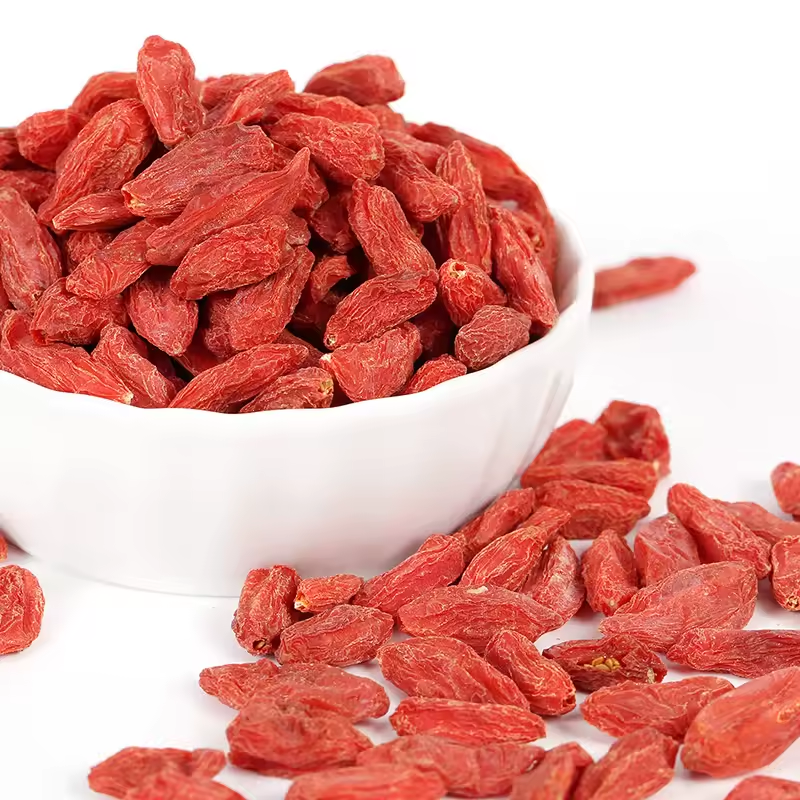
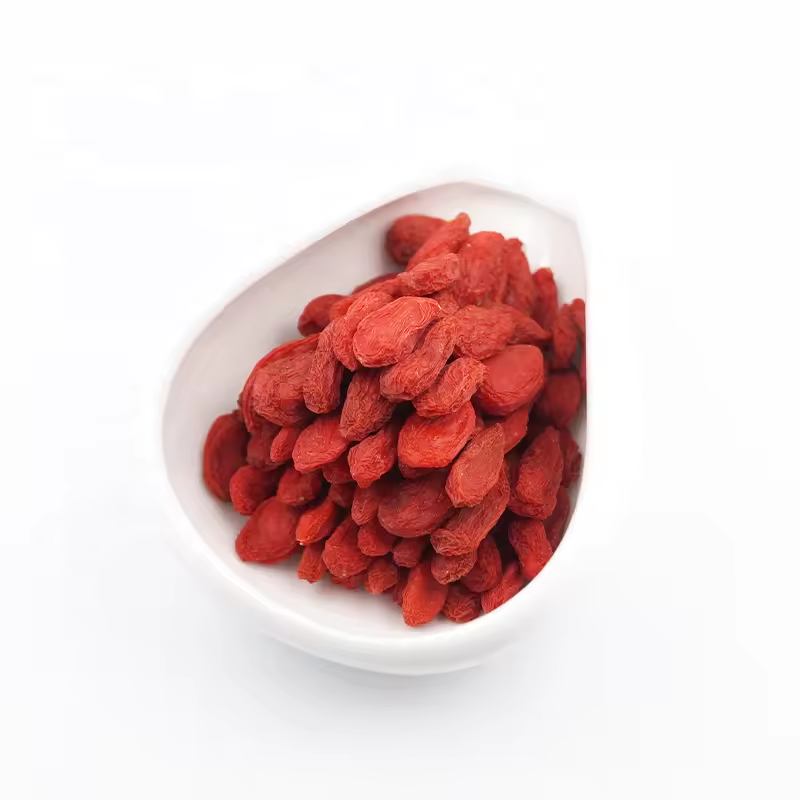
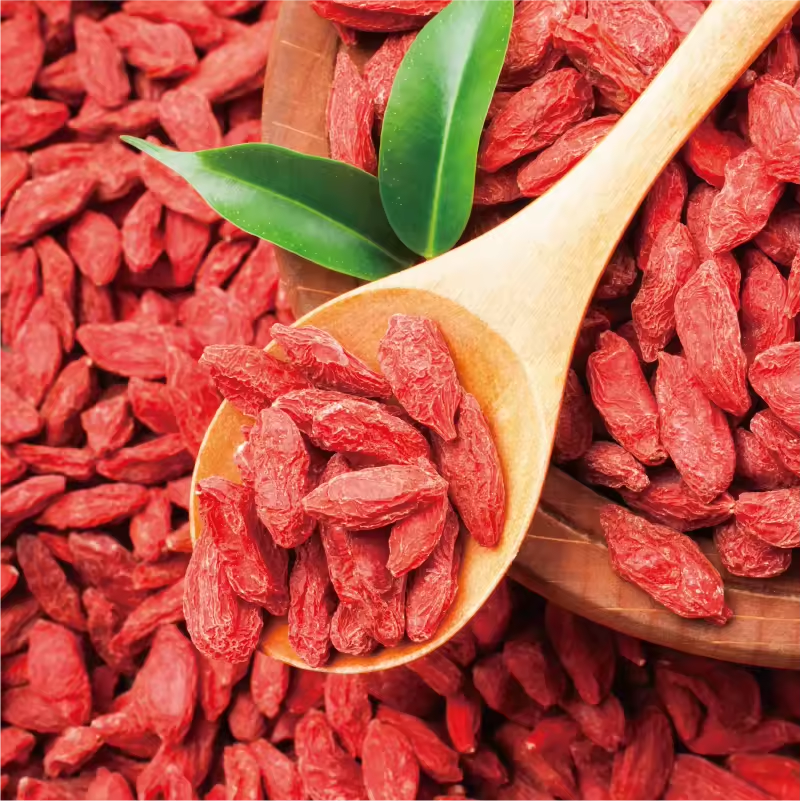
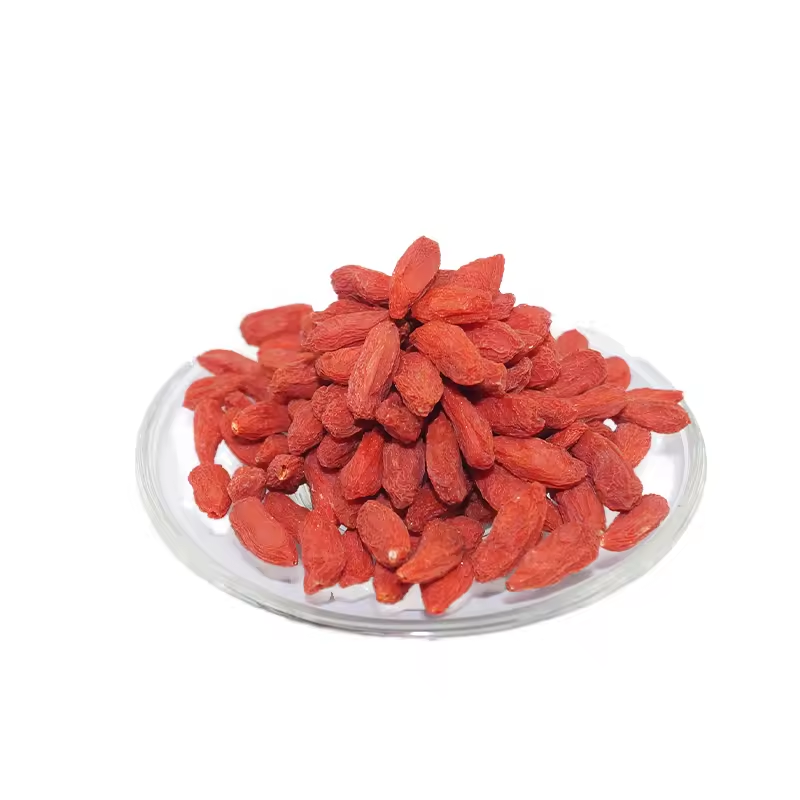
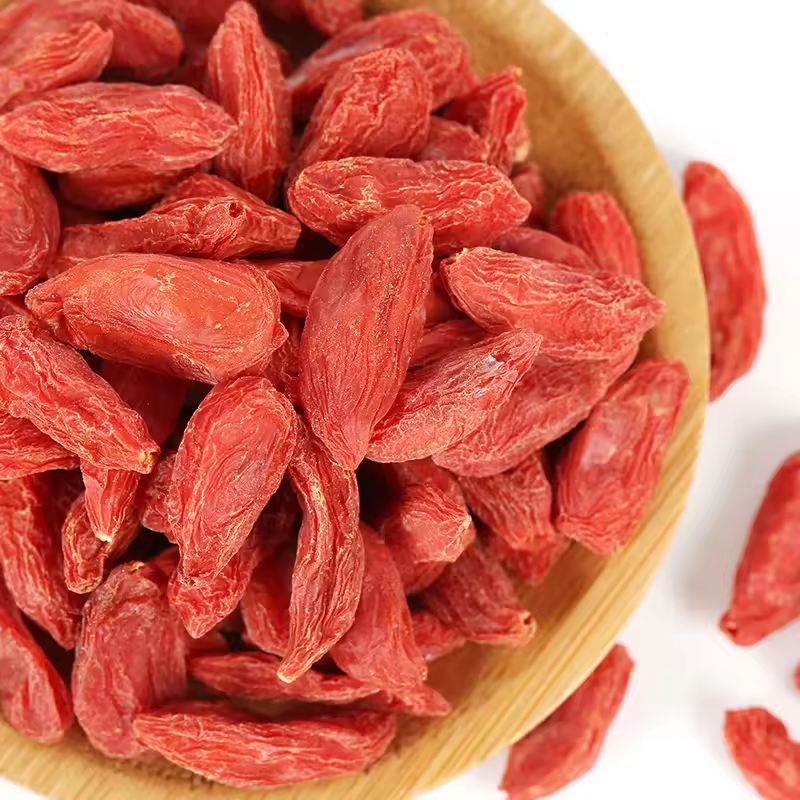

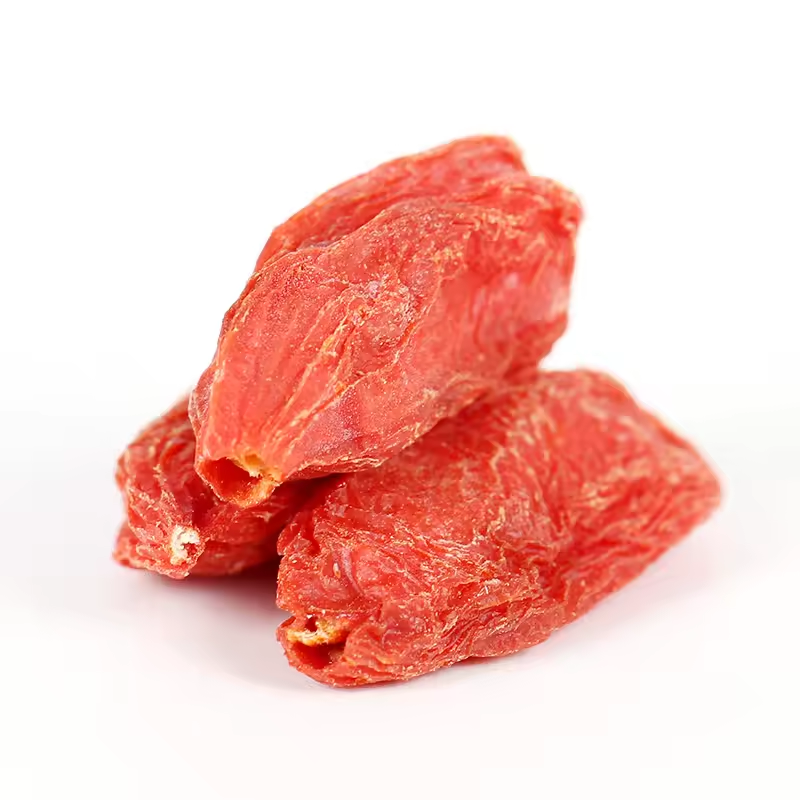

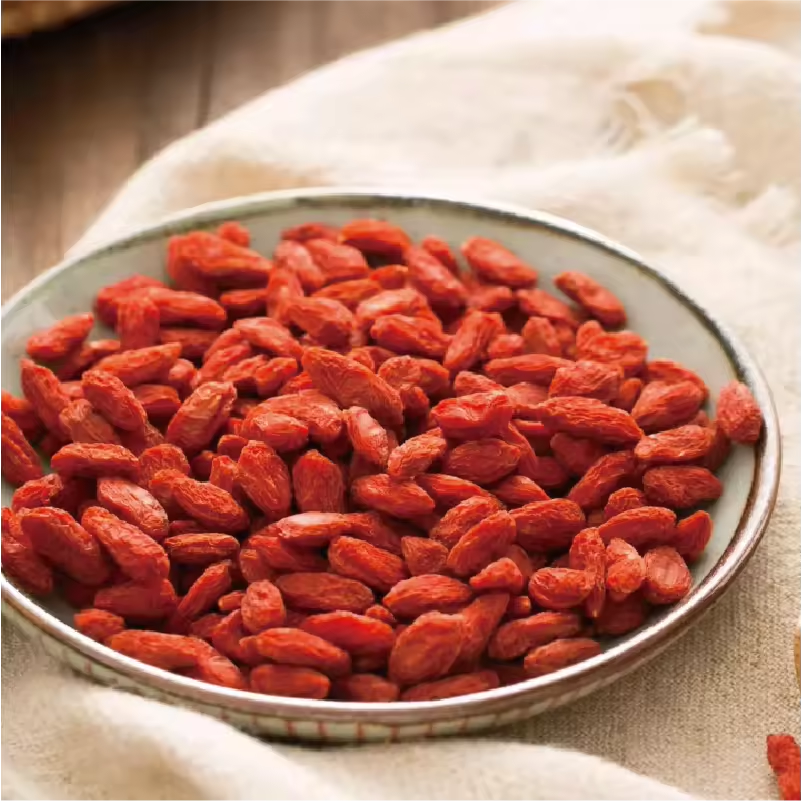
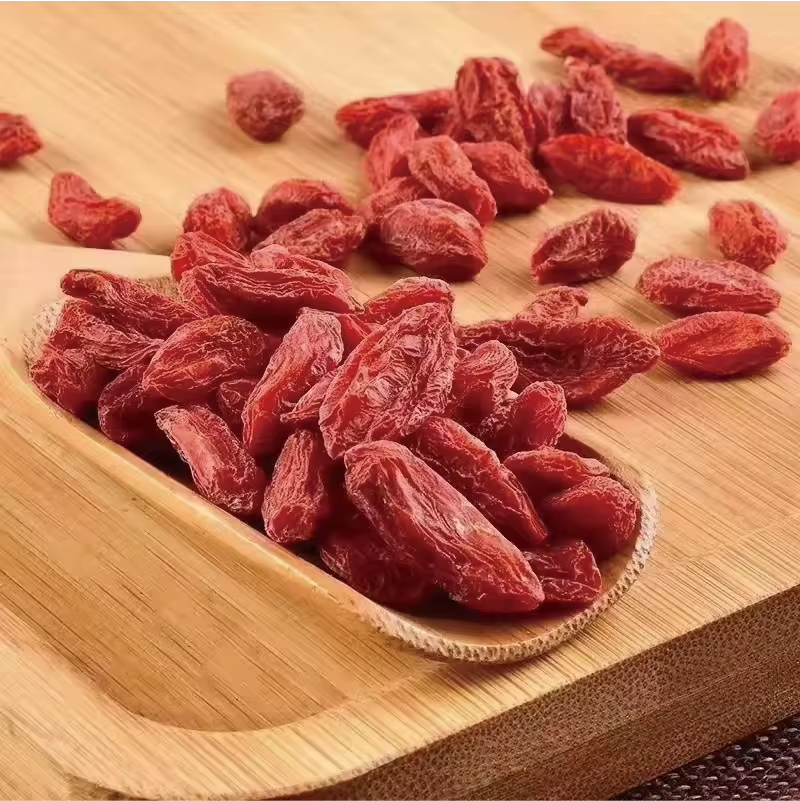
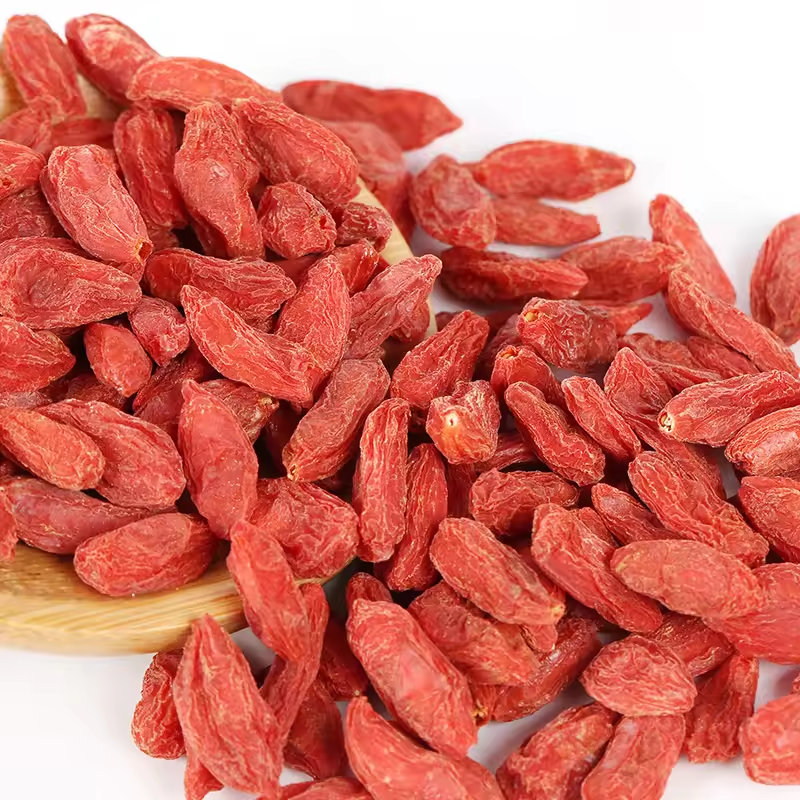
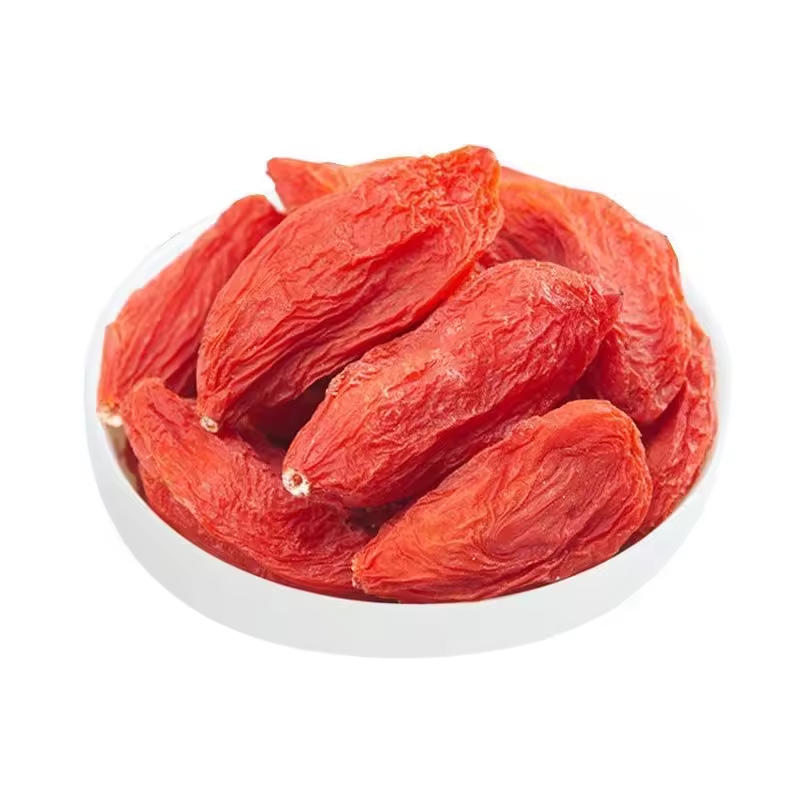

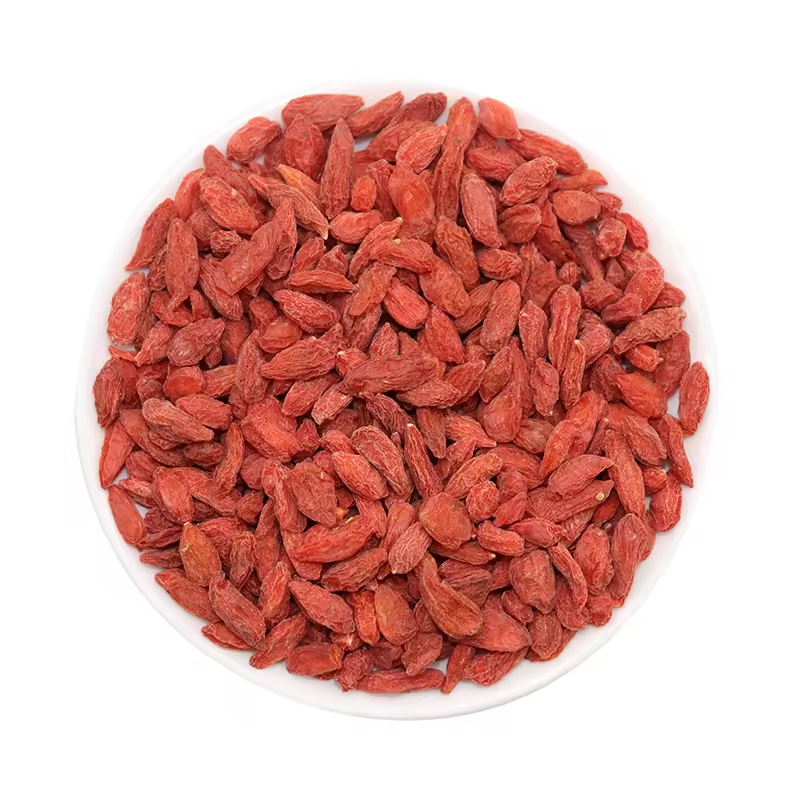
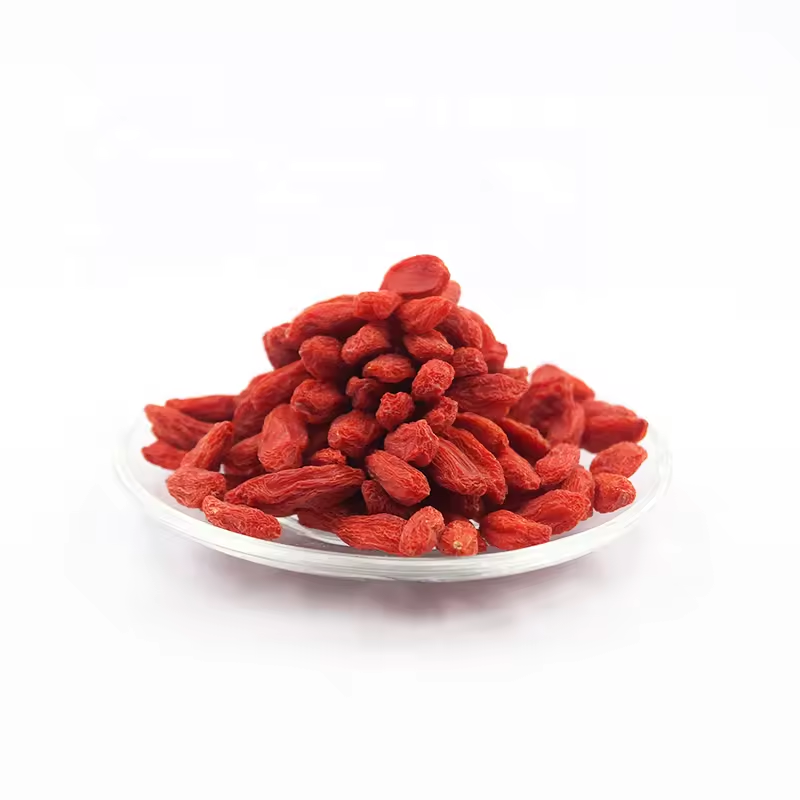

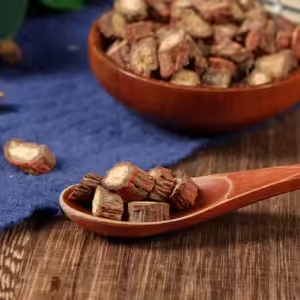

ਸਮੀਖਿਆਵਾਂ
ਅਜੇ ਤੱਕ ਕੋਈ ਸਮੀਖਿਆਵਾਂ ਨਹੀਂ ਹਨ।